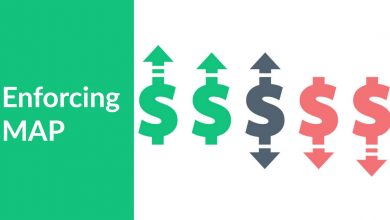
- Data entry is essential for businesses to stay organized, efficient, and accurate.
- Research the right data entry software for your business needs.
- Train employees to use the software and establish guidelines for entering data.
- Implement checks and balances to verify accuracy in the system.
- Consider outsourcing data entry tasks to a professional team.
Data entry is a crucial process for businesses of all sizes. It helps store, organize, and manage information quickly and accurately. An effective data entry system can better understand your customers, products, and services and save time and money. If you’re looking to incorporate data entry into your business operations, here are five tips to help get you started.

1. Choose the Right Data Entry Software
Technology is such a valuable tool when it comes to data entry tasks. Many types of data entry software are available on the market today, so it’s essential to do your research before deciding. Consider how much storage space is needed, the type of data you need to enter and how often, and any other special features that may be needed. It’s also essential to look for software that is easy to use and understand.
Here are some of the best data entry software today:
Microsoft Excel
Microsoft Excel is a popular spreadsheet application that allows you to quickly and easily create tables, enter data, and analyze it for insights. Its easy-to-use interface makes it suitable for professionals and beginners looking to manage their data effectively. With features such as powerful formulas, pivot tables, sorting capabilities, and even graphical representations of your data sets, Excel can help you create accurate reports in no time. The best part is that Microsoft offers generous discounts on its Office 365 subscription package, which includes Excel, so you can save money while still getting access to all its features.
Google Sheets

Google Sheets is another great option for managing and analyzing data. This free online-based software allows you to create spreadsheets, enter data in rows and columns, create charts and graphs, and collaborate with others on projects. With Google Sheets’ intuitive interface, it’s easy to start quickly. It also supports many file formats, so you can easily import and export data from other sources. Furthermore, its generous storage space allows you to store large amounts of data without worrying about running out of space.
FileMaker Pro
FileMaker Pro is ideal for businesses that need more than just basic spreadsheet features. This software offers advanced customization tools that allow you to design your own forms, scripts, and databases tailored specifically for your business. It also features powerful reporting capabilities and can be integrated with other applications to make data entry even easier. The interface is relatively easy to use, and the software is available in desktop and mobile versions, so you can access it wherever you are.
QuickBooks
QuickBooks is a complete accounting package designed for small businesses that need an efficient way of tracking their finances. This software helps you keep track of your income and expenses and allows you to enter customer information quickly and easily. With its user-friendly interface, all the relevant financial data can be entered in no time at all. QuickBooks integrates with other business applications, including payroll systems, so you can easily manage multiple operations from one platform.
2. Train Your Employees
Once you have selected the right data entry system for your business, it’s time to train your employees on how to use it. This includes teaching them all the necessary keys, shortcuts, and commands that are used with the software. HYour employers should also provide regular training sessions on best practices and procedures and periodic refresher courses on data entry. Training can help minimize errors, saving time and money in the long run.
3. Establish Clear Data Entry Guidelines

Establishing clear data entry guidelines is essential to ensure that all information is entered accurately and consistently. These guidelines should include instructions on how to format the data, what fields are required, and any other special conventions or rules. It’s also helpful to provide sample data entries so your employees can understand what they should be entering into the system.
4. Implement Checks and Balances
Another key component of effective data entry is implementing checks and balances to verify accuracy. This might include double-checking entries before they are saved, conducting random audits, or having employees enter their initials after completing each entry. Having checks in place will help ensure that mistakes are minimized and that the data is entered correctly.
5. Consider Outsourcing
Finally, if your business doesn’t have the in-house resources to manage data entry on its own, consider outsourcing it to a professional. Outsourcing your tasks to a data entry outsourcing company can help save time and money and provide you with access to experienced professionals familiar with the latest software and technology. They can help you streamline processes, reduce costs and improve data accuracy.
In Summary
Data entry can be time-consuming, but having an efficient and accurate system in place can make all the difference for your business operations. With these five tips, you’ll be able to successfully set up and maintain an effective data entry system for your business.





